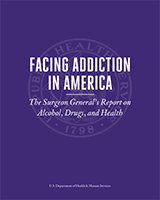From: CHAPTER 6, HEALTH CARE SYSTEMS AND SUBSTANCE USE DISORDERS

Facing Addiction in America: The Surgeon General's Report on Alcohol, Drugs, and Health [Internet].
Substance Abuse and Mental Health Services Administration (US); Office of the Surgeon General (US).
Washington (DC): US Department of Health and Human Services; 2016 Nov.
NCBI Bookshelf. A service of the National Library of Medicine, National Institutes of Health.
